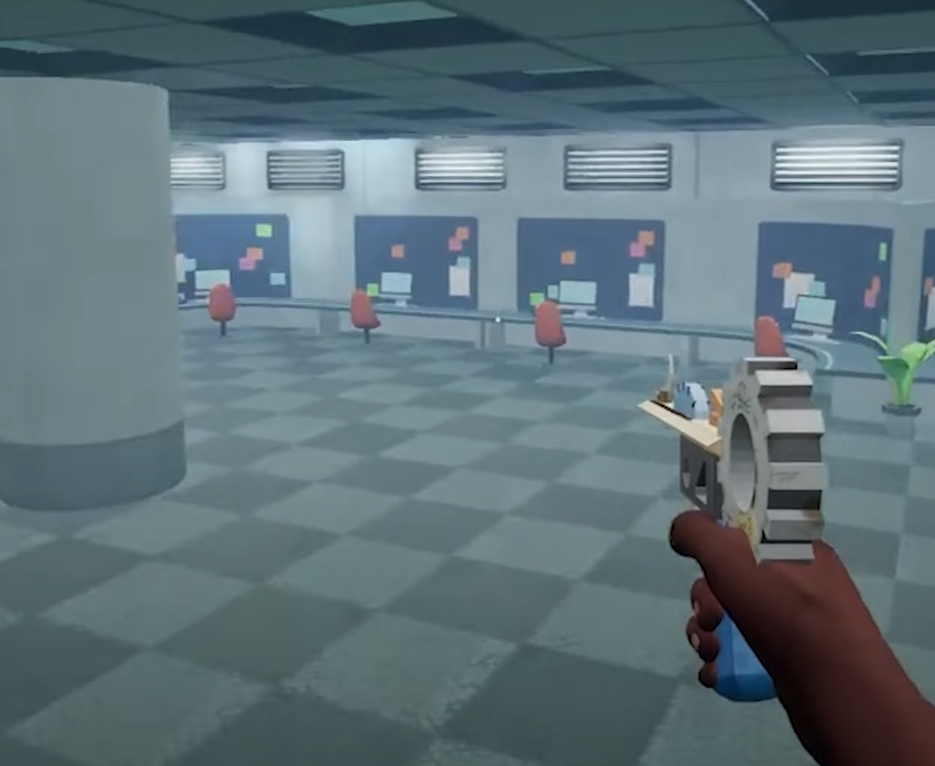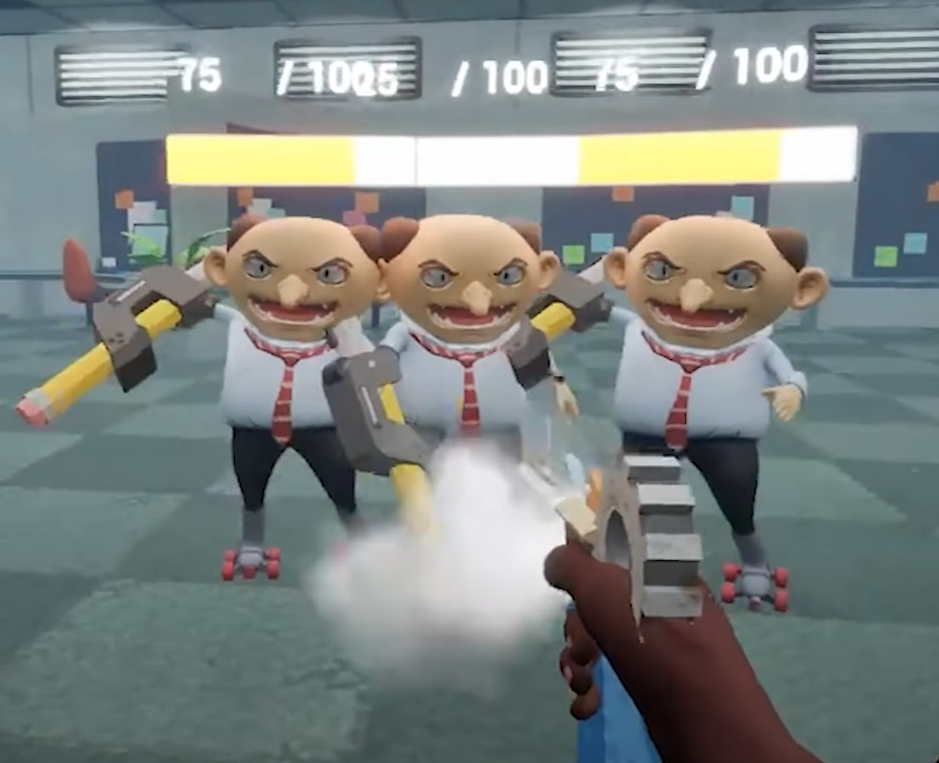
BLASTED LAYOFFS
See more specific about the project 👉
See project pitch 👉
Blasted Layoffs is a fast-paced, comedic single-player FPS.
Players take on the role of Philip, a new temp at E3 (Everything, Everywhere, Enterprises). When the company suddenly announces massive layoffs, Philip arms himself with non-lethal weapons made from office supplies. His goal? Mess up the clothes of rival coworkers so they’re too embarrassed to compete.
Fight your way to the CEO’s office, defeat the boss, and secure your job — along with a major promotion.
Genre: Fast-paced FPS
Role: Mechanic Designer
Duration: 24 Weeks
Tool used: UE5
Team Szie: 8 - 10
mY Contributions
Controller Framework Development
Game Controller Build
Based on the established game core loop, I contributed to refining the system design and took responsibility for developing the first-person player controller. This included implementing basic movement, sprinting, jumping, crouching, mantling.
Although I started the project with almost zero experience in UE5, I quickly taught myself the necessary development skills and built the controller system from scratch.
AI development in Combat design
Building AI EQS System
In collaboration with the level design team, I also designed and implemented the AI system, enabling enemies to track the player, navigate dynamically, and climb over obstacles based on the level layout.
pROJECT iNTERIGATION
Enemy Melee Animation integration
Additionally, I frequently handled system integration tasks, especially within complex systems developed by multiple team members. I was responsible for organizing logic, troubleshooting, and debugging.
I also helped teammates solve various technical challenges, such as weapon model replacement, animation integration, and blueprint logic coupling.
Meanwhile, I worked with programmers, artists, and level designers to ensure smooth integration of all systems and assets into the game.
my design insights
Combat Experience Design
In designing the combat experience, we drew inspiration from several classic first-person shooters:
Titanfall 2 for its high-mobility player controller, Doom Eternal for its combat pacing, and Serious Sam for its overwhelming enemy waves.
We implemented a Wall Running system to encourage players to maintain high mobility while skillfully using the environment to control the flow of battle. Since players need to simultaneously manage terrain, abilities, enemy positions, and aiming, we adopted a high-feedback controller design, offering simple, intuitive controls and clear, responsive feedback.
By introducing wave-based enemy assaults, we compelled players to keep moving and use the terrain to maintain distance from enemies. To further encourage high-mobility gameplay, we designed a momentum reward system:
As players continuously build momentum, it converts into energy, visually represented by an energy meter that players can manage and utilize. When enough energy is accumulated, players can trigger bullet time, perform more agile dodges, and unlock other abilities.
To incentivize continuous movement, the energy gradually decays over time, prompting players to stay active and skillful in their movement. This system allows players to build combat advantages, execute high-skill eliminations, and reinforces the positive feedback loop encouraging them to face increasingly dense enemy waves.
Enemy AI Pathfinding Design
To enhance the tactical depth of combat environments, we designed numerous elevated platforms that players can reach using their mobility. However, occupying high ground does not guarantee safety.
I used Nav Links to construct paths for enemy AI to reach elevated areas. To create natural-looking enemy movement, we designed stacked boxes along the path, allowing AI to ascend in stages rather than following a direct Nav Link route.
Time to Kill (TTK) Design
We set the Time to Kill (TTK) for each enemy—when players engage at full firepower—between 1 and 2.5 seconds, aiming to never exceed 2.5 seconds.
This design is based on two core considerations:
A short TTK gives players a sense of control when facing large numbers of enemies, preventing feelings of helplessness.
Since players must devote significant attention to observing the terrain and managing Wall Running, aiming requires a momentary shift in focus. By limiting TTK, we reduce cognitive load and ensure combat remains smooth and not overly taxing.






